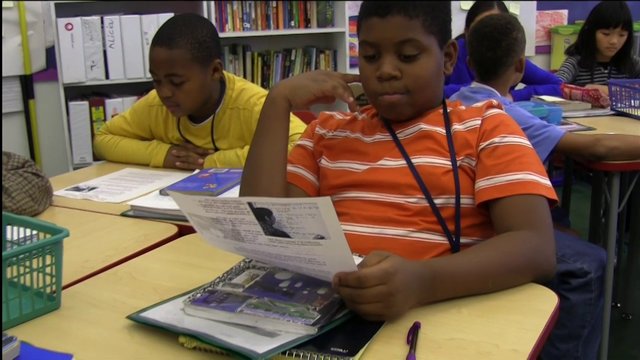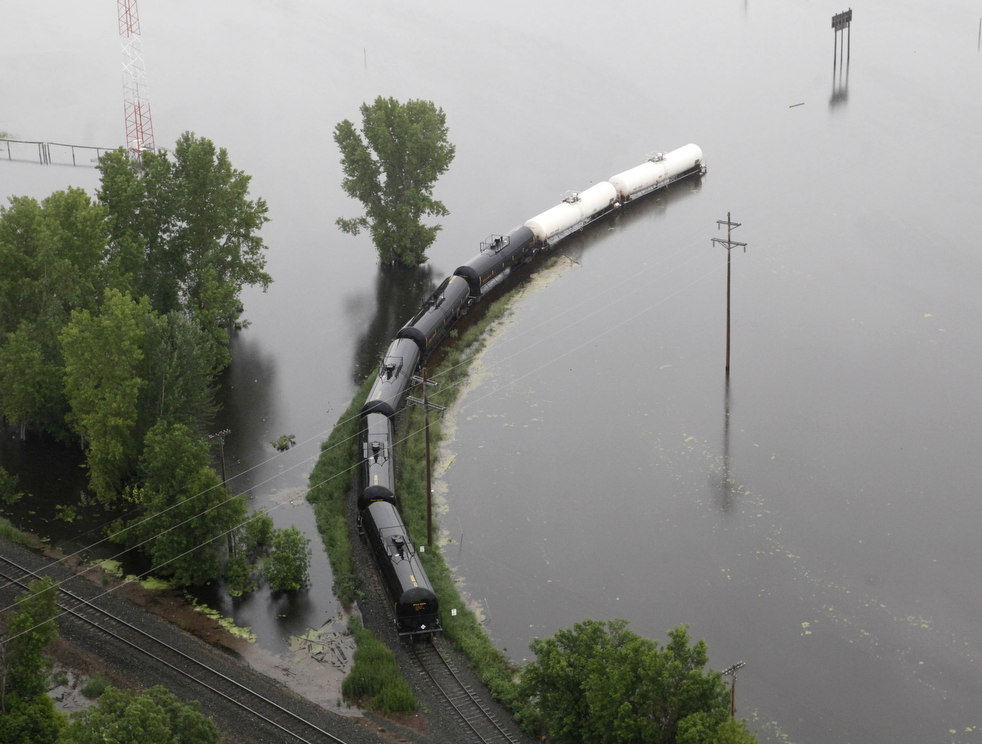In a recent article entitled, The Lost Art of Teaching Soundly Structured Lessons published in Education Week’s Teacher magazine, Mr. Mike Schmoker calls out some of the reverence afforded new fads in education when he said we should consider the elements of effective instruction that decades of research has shown to work. I tend to consider some of the feverish and questionable ed. tech approaches to learning I’ve seen of late. IN many ways, ed.tech needs to consider putting more energy and consideration into instructional know-how than they put into minimal viable product design and launch. Schmoker does a good job identifying what a resurgence of what teachers know to be true in basic approaches to teaching and how it can surpass the effects of all other initiatives thus far launched in this confused, distracted era of “reform.” Consider the following:
There are only a few such game-changing interventions available to educators, but they do more to determine how many students we can educate than all else. One of them is a well-structured lesson, built around certain primary elements. These familiar elements (which I’ll describe shortly) are at or near the top of the list of the most effective known instructional practices. They have an impeccable pedigree, going back nearly half a century. They are critical, moreover, to the success of the most quintessential factors that promote college and career preparedness: coherent, content-rich curriculum, and authentic literacy (all of which the Common Core State Standards are happily, if imperfectly, attempting to clarify for us).
He goes on to identify the following elements:
Purpose of the Lesson: Provide the students a clearly-formulated, clearly-stated learning objective. Don’t forget, it is also important to include why the objective is important to learn and how it will be assessed.
Modeling or Demonstrating: Teachers should not only explain, but explicitly show students how to perform the thinking and working necessary to achieve the objective and succeed on the given tasks and assessments.
Guided Practice / Independent Practice: This is part of what Schmoeker identifies as the critical recursive cycle that starts with students practicing each step of the skill as modeled by the instructor.
Check for Understanding: This is a formative assessment component in which the teacher observes the students’ processes to make sure that they are acquiring the requisite components of the overall skill or concept.
Group Work: Pairing or grouping students in order to allow them to assist one another with the process, tasks, thinking, and work. Schmoker points out that a teacher might observe that all students are not progressing as individuals, and this strategy can help distribute the possibility of success across a few brains, however in some instances a teacher will have to re-teach or re-address the core skill or concepts with the whole class.
 For my part, it is not identified explicitly, but there are some other elements that I call out directly for teachers to consider and include in most of their lessons. To start it all off, and as part of elaborating the purpose of the lesson, we urge teachers to excite, invigorate, and ignite students’ interests through a good Anticipatory Set or Hook Activity and always end with a Closure Activity that helps student conclude their process and internalize what they’ve learned and how to connect it with a continuum of skills from previous learning.
For my part, it is not identified explicitly, but there are some other elements that I call out directly for teachers to consider and include in most of their lessons. To start it all off, and as part of elaborating the purpose of the lesson, we urge teachers to excite, invigorate, and ignite students’ interests through a good Anticipatory Set or Hook Activity and always end with a Closure Activity that helps student conclude their process and internalize what they’ve learned and how to connect it with a continuum of skills from previous learning.
I wish I could disagree with the following observation Mr. Schmoker makes later in his article, but I can not.
Accompanied by local educators, I visit dozens of schools every year all around the United States. I assure you that the lessons we witness in the great majority of classrooms violate most of the elements of well-structured lessons.
And for those that have utilized our online tools that support our workshops and training can attest to the focus we place on illuminating and coordinating quality instructional practice right down to the design of the humble lesson plan. There is a DNA in good teachers that understand and know this structure and can create variations from it to provide rich instructional diversity in the form of inquiry-based instruction, project-based instruction, and the like. Here is a link to one of our simple PDF support documents for lesson development that we have refined and used with over 5,000 teachers over the past few years. (You can view a more comprehensive support plan for Lesson development from one of our projects at the following page.)
 Participants will closely read and name the Common Core State Standards for Literacy in History/Social Studies, Science, and Technical Subjects with a 1 -5 word phrase, which will allow them to become more familiar with the content of the standards. Participants will record their work on the Name the Standards handout. Begin with the Reading strand and continue with the Writing strand as time permits. Allow 20 – 40 minutes for this activity.
Participants will closely read and name the Common Core State Standards for Literacy in History/Social Studies, Science, and Technical Subjects with a 1 -5 word phrase, which will allow them to become more familiar with the content of the standards. Participants will record their work on the Name the Standards handout. Begin with the Reading strand and continue with the Writing strand as time permits. Allow 20 – 40 minutes for this activity. If the above passage seems familiar, it’s from Steinbeck’s Of Mice and Men. I taught this novel to 9th and 10th graders at two different high schools. This specific part of the story focuses on George describing the dream home and property he and Lennie hope to own after shifting from farm to farm as migrant laborers. There were both literary standards and historical reading and analysis standards highly aligned to this excerpt, but neither were of any real interest to most 14-15 year olds. So I, like most teachers, endeavored to come up with a way to intrigue the average teen to consider the passage and the writing style and the context. “How would you describe your dream home?” I would ask them. “Was it as simple as George and Lennie’s?” Always, the answer was, “NO!” It was easy for us to understand that the dream of these farm laborers was fairly muted due to the harsh conditions of their own existence. Students were instructed to draw inferences from their own lives in direct relation to the location, features, and trappings of the dream home that they described. As an extension into the real of informational reading, we would look over Homes and Land real estate magazines to see how current realtors described properties as a means to get the interest of potential buyers.
If the above passage seems familiar, it’s from Steinbeck’s Of Mice and Men. I taught this novel to 9th and 10th graders at two different high schools. This specific part of the story focuses on George describing the dream home and property he and Lennie hope to own after shifting from farm to farm as migrant laborers. There were both literary standards and historical reading and analysis standards highly aligned to this excerpt, but neither were of any real interest to most 14-15 year olds. So I, like most teachers, endeavored to come up with a way to intrigue the average teen to consider the passage and the writing style and the context. “How would you describe your dream home?” I would ask them. “Was it as simple as George and Lennie’s?” Always, the answer was, “NO!” It was easy for us to understand that the dream of these farm laborers was fairly muted due to the harsh conditions of their own existence. Students were instructed to draw inferences from their own lives in direct relation to the location, features, and trappings of the dream home that they described. As an extension into the real of informational reading, we would look over Homes and Land real estate magazines to see how current realtors described properties as a means to get the interest of potential buyers.
 teacher. This came in from one 6th grader (who might or might not live in my home):
teacher. This came in from one 6th grader (who might or might not live in my home):




 Finally, strong learning provides students with deep opportunities and supporting structures and activities to reflect on their learning. Reflect on the changes that have occurred in their own knowledge, their perceptions, and their awareness of a world that inevitably grows to be more diverse, more complex, and more consequential as a part of the ongoing development of a growing, diverse, complex individual. Teachers aware of this ask students to write reflective pieces, keep a learning journal, map their progress in terms of self-discovery, share their experiences with their peers through debriefs, share their experiences with adults through writing groups, discussions, or structured defense of learning presentations that include experts, community members, parents, and educators.
Finally, strong learning provides students with deep opportunities and supporting structures and activities to reflect on their learning. Reflect on the changes that have occurred in their own knowledge, their perceptions, and their awareness of a world that inevitably grows to be more diverse, more complex, and more consequential as a part of the ongoing development of a growing, diverse, complex individual. Teachers aware of this ask students to write reflective pieces, keep a learning journal, map their progress in terms of self-discovery, share their experiences with their peers through debriefs, share their experiences with adults through writing groups, discussions, or structured defense of learning presentations that include experts, community members, parents, and educators.